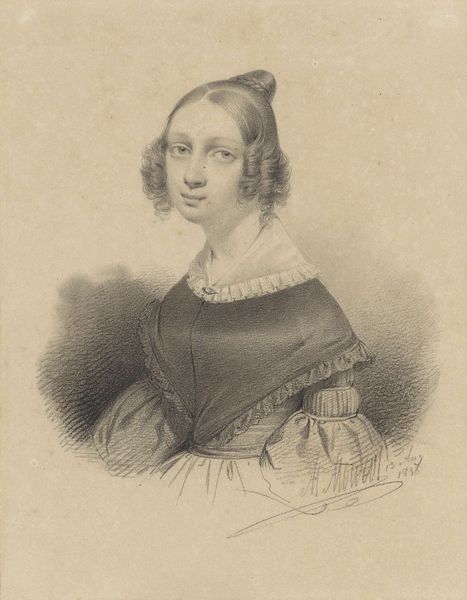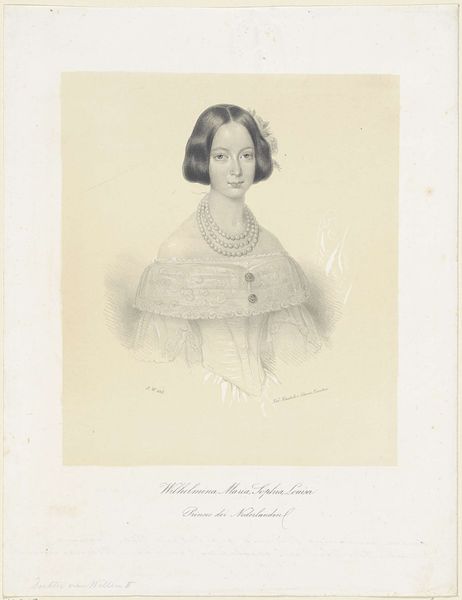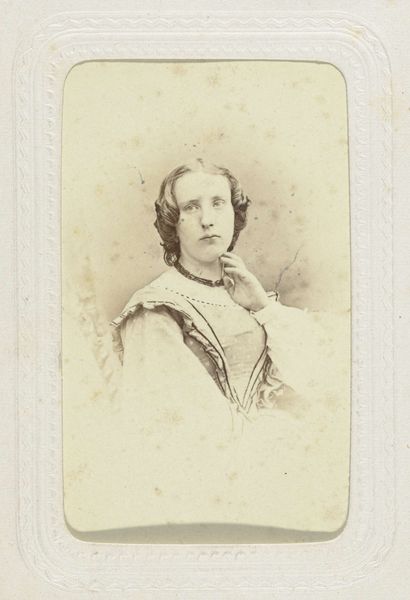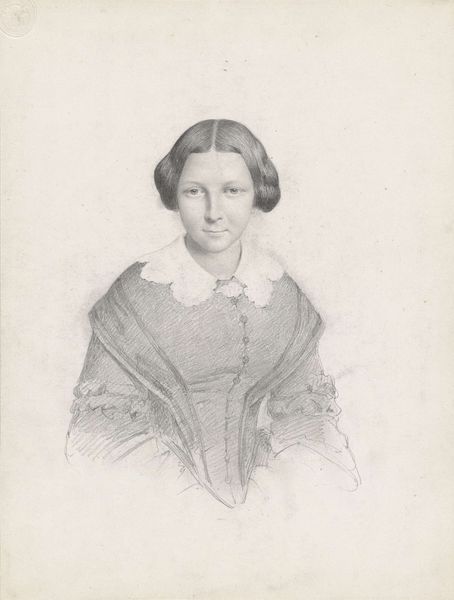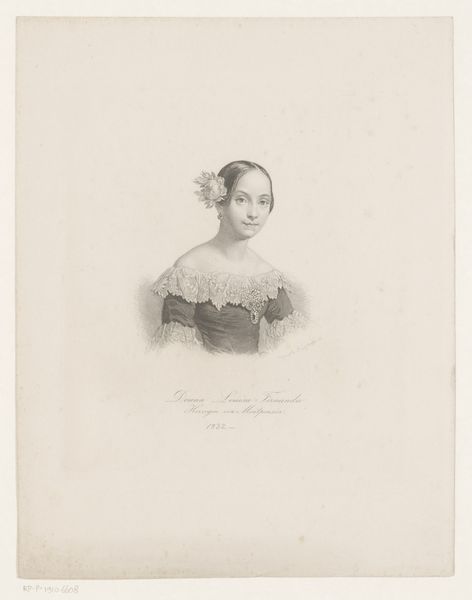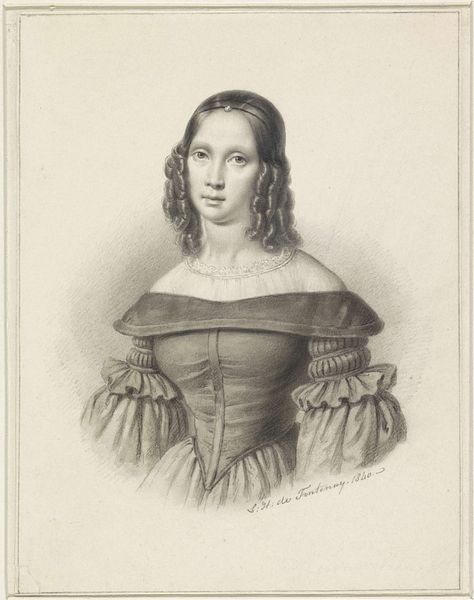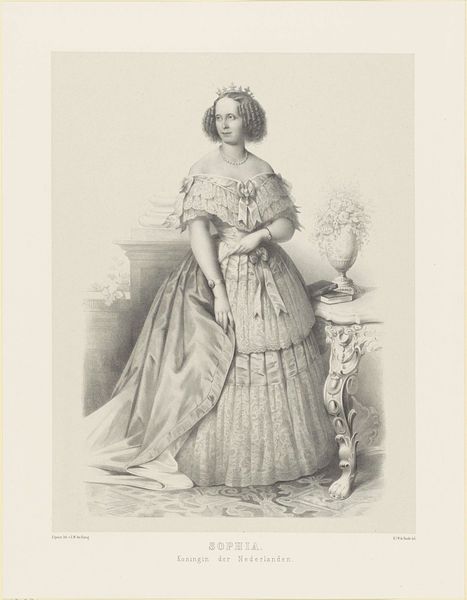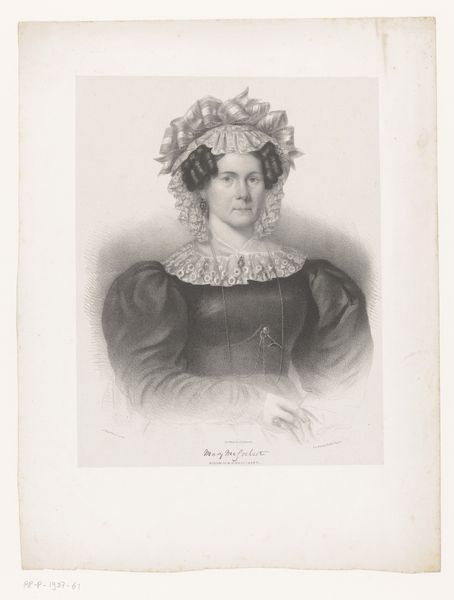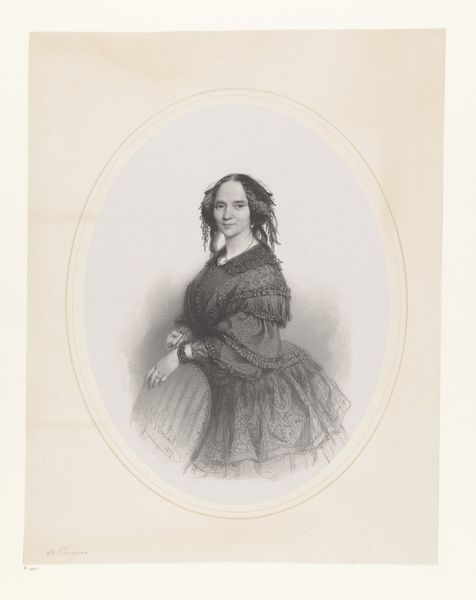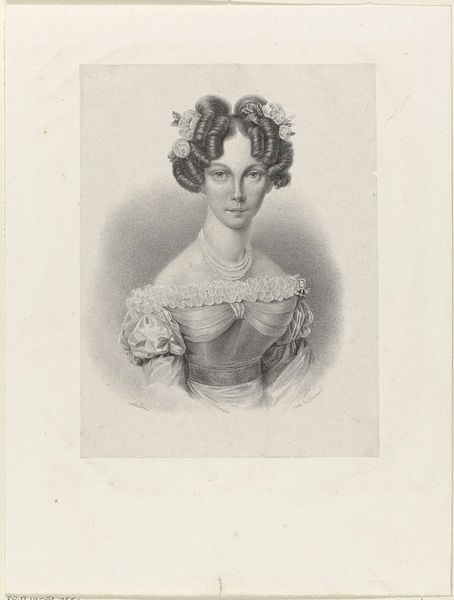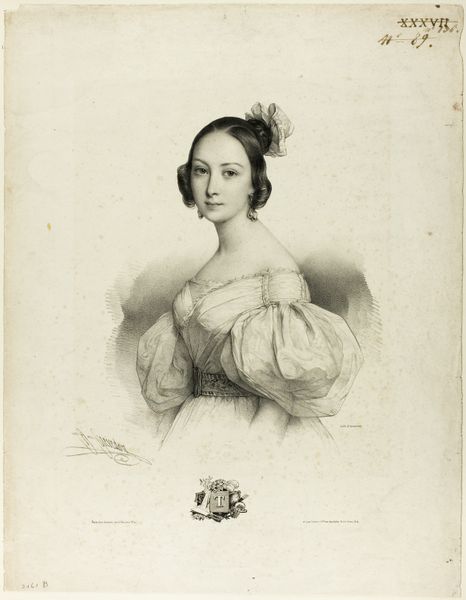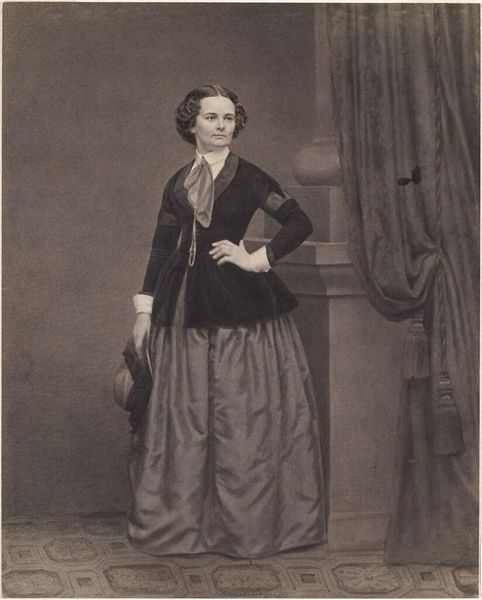
Portret van Amalia van Saksen-Weimar-Eisenach 1863 - 1884
0:00
0:00
nicolaasjohanneswilhelmusderoode
Rijksmuseum
print, photography, gelatin-silver-print
#
portrait
#
photo of handprinted image
# print
#
old engraving style
#
photography
#
old-timey
#
gelatin-silver-print
Dimensions: height 604 mm, width 468 mm
Copyright: Rijks Museum: Open Domain
Curator: This gelatin-silver print from between 1863 and 1884 presents us with a portrait of Amalia van Saksen-Weimar-Eisenach, crafted by Nicolaas Johannes Wilhelmus de Roode. Editor: It's striking. The oval format combined with the hazy gray tones evokes a kind of wistful remembrance. Curator: Indeed. De Roode was working during a fascinating transitional period in photography. We see advancements in photographic printing allowing for multiple copies and a wider distribution of portraiture amongst the rising middle classes. Editor: Looking at the details in the lace of her shawl, it appears remarkably precise for an early photographic print, doesn't it? How did he achieve that level of detail? Curator: It likely involved meticulous darkroom work. Gelatin-silver prints allowed for sharper images than earlier processes, but mastering the technique to capture such nuance required significant skill. Think about the labor involved – preparing the chemicals, coating the paper, precisely controlling exposure and development. It was a highly skilled, artisanal practice, very much in line with printmaking. Editor: It’s interesting to consider this within the larger context of portraiture at the time. Photography, while gaining traction, was still vying for status against painted portraits, right? These photographic prints democratized portraiture in some ways, making them more accessible but they also changed the relationship with images. Curator: Precisely! The relative affordability of these images altered notions of status and representation, impacting social structures. Editor: It does make you wonder about Amalia herself, and how this image shaped her public persona within that context. Curator: Exactly, her family ties with the Dutch royalty granted her the economic mobility and allowed her image to be consumed by a wider public and construct that persona you mentioned. Editor: I hadn't thought about this work within that social framework initially; I was more caught up in its nostalgic feel, but now I see so many factors involved in producing it, even in its distribution channels. Curator: It’s rewarding to consider not just the visual impact, but also the production, the skill, and the socioeconomic contexts at play in photography from this time.
Comments
No comments
Be the first to comment and join the conversation on the ultimate creative platform.

